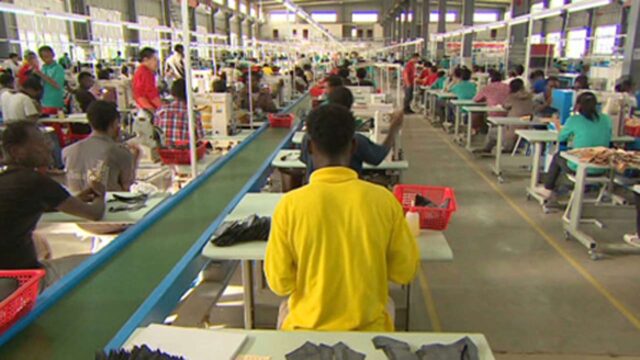
Despite improved confidence in the economy as shown in the latest Manufacturers Confidence Index (MCCI) by local manufacturers, there are concerns about the unabating liquidity crisis in the productive sector, especially as it relates to access to foreign exchange.
With a weakened currency that is already trading at N535 to the dollar as well as the effect of inflation on household incomes, local producers are worried that the recent controversy over the control of Value Added Tax (VAT) between the Federal and State governments, will take a huge toll on their businesses.
According to the latest MCCI released by MAN yesterday, the difficulty in sourcing forex for importation of raw materials and machines that are not locally available has been a critical challenge to manufacturers.
The local producers noted that since the onset of COVID-19 pandemic in the early quarter of 2020, the severity of forex challenge has intensified, particularly as the value of the Naira deteriorated.
They added that though the Central Bank of Nigeria (CBN) has consistently intervened in the forex market (official and BDC windows), the result has been negligible, particularly in the second quarter of 2021.
Consequently, the MCCI showed that 52 per cent of manufacturers interviewed during the fieldwork for the second quarter MCCI, disagreed that the rate at which forex was sourced improved, while 30 per cent of the operators were not sure, and only 18 per cent agreed that the rate has improved.
On this account therefore, MAN said it was critically important for the Central Bank of Nigeria (CBN) to speed up the ongoing review of forex management procedures to ensure that available forex in the country is productively utilised.
The MCCI showed that the performance of the economy in the second quarter of 2021 consolidated on the achievement made in the first quarter after a very difficult period accessioned by the onslaught of COVID-19 pandemic.
In the quarter under review, businesses activities appeared to have further stabilised.
Consequently, even though the macroeconomic variables like the exchange rate, lending rate and inflation rate are still very much unfavourable, businesses were able to maintain operation, particularly at the level it was in 2019 before COVID-19 came in 2020.
On account of the improved economic tranquility, the aggregate MCCI increased to 52.9 points in the second quarter of 2021 from 49.1 points recorded in the first quarter of the year.
The range was the first time the index value reached and exceeded the 50 neutral points since the first quarter of 2020 when it recorded 44.4 points, thus, suggesting that the macroeconomic ambience improved in the second quarter of 2021.
By implication, the performance showed an improvement in the confidence of manufacturers in the economy.
A look at the manufacturing indicators showed that production and distribution costs increased by 21 per cent in the second quarter of 2021 as against 22 per cent increase in the first quarter of the year; thus, indicating one per cent decline over the quarters.
Capacity utilization declined by eight per cent in the second quarter of the year as against four per cent decline recorded in the first quarter, the volume of production also declined by eight per cent in the second quarter of 2021 viz-a-viz five per cent decline in the first quarter of the year.
Also, manufacturing investment declined by 15per cent in the second quarter of 2021 as against 17 per cent recorded in the preceding quarter, while employment declined by nine per cent in the second quarter of the year as against 14 per cent decline recorded in the first quarter.
Similarly, sales volume declined by eight per cent in the second quarter of the year compared with eight per cent decline recorded in the first quarter, just as the cost of shipping increased by 20 per cent in the second quarter of the year as against 26 per cent increase observed in the first quarter.







